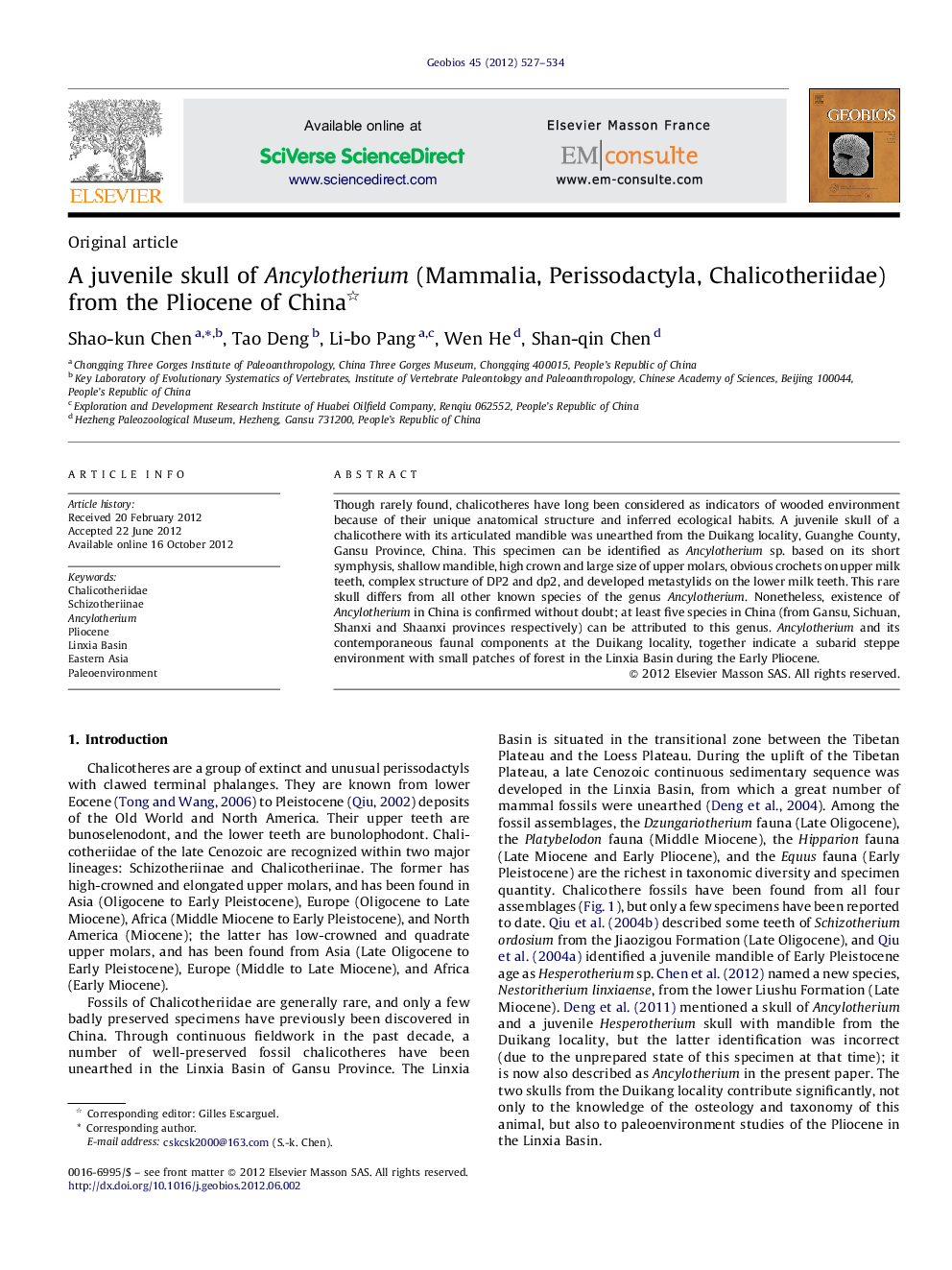| Article ID | Journal | Published Year | Pages | File Type |
|---|---|---|---|---|
| 4748312 | Geobios | 2012 | 8 Pages |
Abstract
Though rarely found, chalicotheres have long been considered as indicators of wooded environment because of their unique anatomical structure and inferred ecological habits. A juvenile skull of a chalicothere with its articulated mandible was unearthed from the Duikang locality, Guanghe County, Gansu Province, China. This specimen can be identified as Ancylotherium sp. based on its short symphysis, shallow mandible, high crown and large size of upper molars, obvious crochets on upper milk teeth, complex structure of DP2 and dp2, and developed metastylids on the lower milk teeth. This rare skull differs from all other known species of the genus Ancylotherium. Nonetheless, existence of Ancylotherium in China is confirmed without doubt; at least five species in China (from Gansu, Sichuan, Shanxi and Shaanxi provinces respectively) can be attributed to this genus. Ancylotherium and its contemporaneous faunal components at the Duikang locality, together indicate a subarid steppe environment with small patches of forest in the Linxia Basin during the Early Pliocene.
Related Topics
Physical Sciences and Engineering
Earth and Planetary Sciences
Palaeontology
Authors
Shao-kun Chen, Tao Deng, Li-bo Pang, Wen He, Shan-qin Chen,
